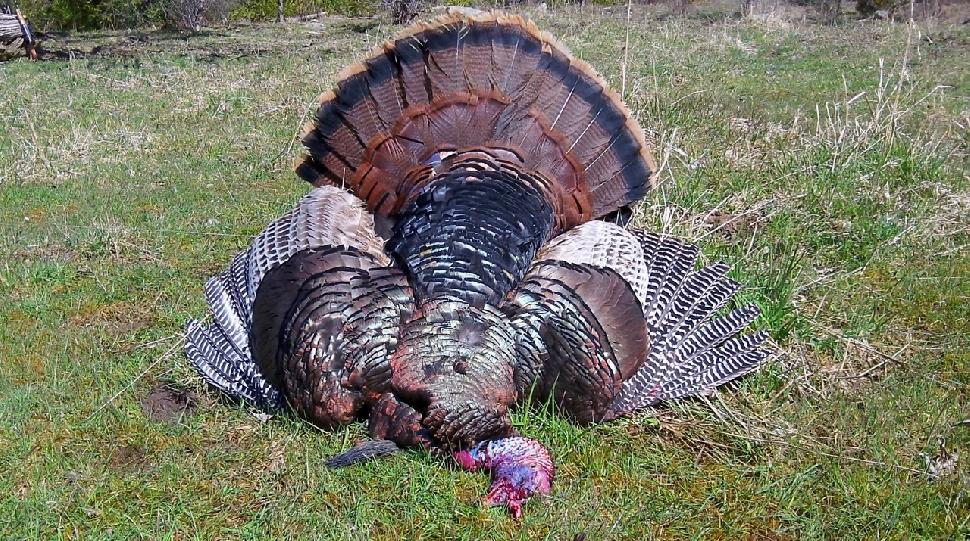Follow Our Tips to Find Out Where Gobblers Gather
Advertisement
Whether you’re bowhunting or shotgunning for turkeys, the goal when it comes to scouting is the same: to find the birds. As good as your turkey hunting skills may be, after all, your chances of success are slim if you’re looking for action in an area where there are very few birds.
Reconnaissance
In preparation for southern Ontario’s spring season, I usually begin seriously scouting in mid-March; mild, sunny mornings are best. As a rule, this time of year finds the birds still flocked up and quite visible. And with little snow cover, turkeys tend to gravitate toward the previous year’s crop fields. Good bets for attracting birds are cut cornfields, hayfields and soybean fields next to heavy cover suitable for roosting.
Advertisement
Begin scouting an hour or two after dawn by driving around promising areas, with your binoculars at the ready. I carry township maps in my truck so that when I spot birds, I can simply jot down the lot and concession numbers of their location for future reference. Plus, you’ll need this information to find out who owns the property, so you can ask them for permission to hunt on their land.
Access
Don’t be concerned at this time whether the birds you locate are all hens. Believe me, if there are hens in the area, there will be toms close by. And keep in mind that you’ll likely have to ask more than one property owner for permission to hunt on his or her property. Why? You may see 50 birds concentrated in a small field during your pre-season scouting, but once it’s opening day they’ll likely be spread out over a much larger area.
At any rate, once you’ve located several groups of birds, it’s time to start knocking on doors to get permission from landowners to hunt on their properties. Over the years, I’ve found that Saturday afternoon is the best time to ask; people generally seem more relaxed then, certainly more so than at any other time of the week. That said, you’ll still get plenty of refusals. But by being polite, confident and presentable (leave the camo at home), you’ll also get your share of green lights.
Advertisement
Signs of Life
Once you get permission to hunt a property, it’s imperative that you continue to scout, getting to know the lay of the land as much as possible before the season opens. Turkey tracks, scratches and droppings are all indications that birds are in the area. And much like deer, turkeys often follow trails, bush roads, fencelines and treelines as they go about the business of being turkeys. In particular, toms travel these edges in search of receptive hens during the spring, especially once the females start nesting. Clearly, these are good places to set up.
I also really like to locate roosting trees, which are usually found just inside the bush near field edges. Good roosting trees generally have several thick, horizontal limbs with enough space among them for birds to land. The dead giveaway that roosting turkeys are using such trees, though, is when you find droppings and feathers on the ground beneath the branches. As with trails, set up here and you’re sure to find some action.
And, with any luck, put a turkey on the table.

